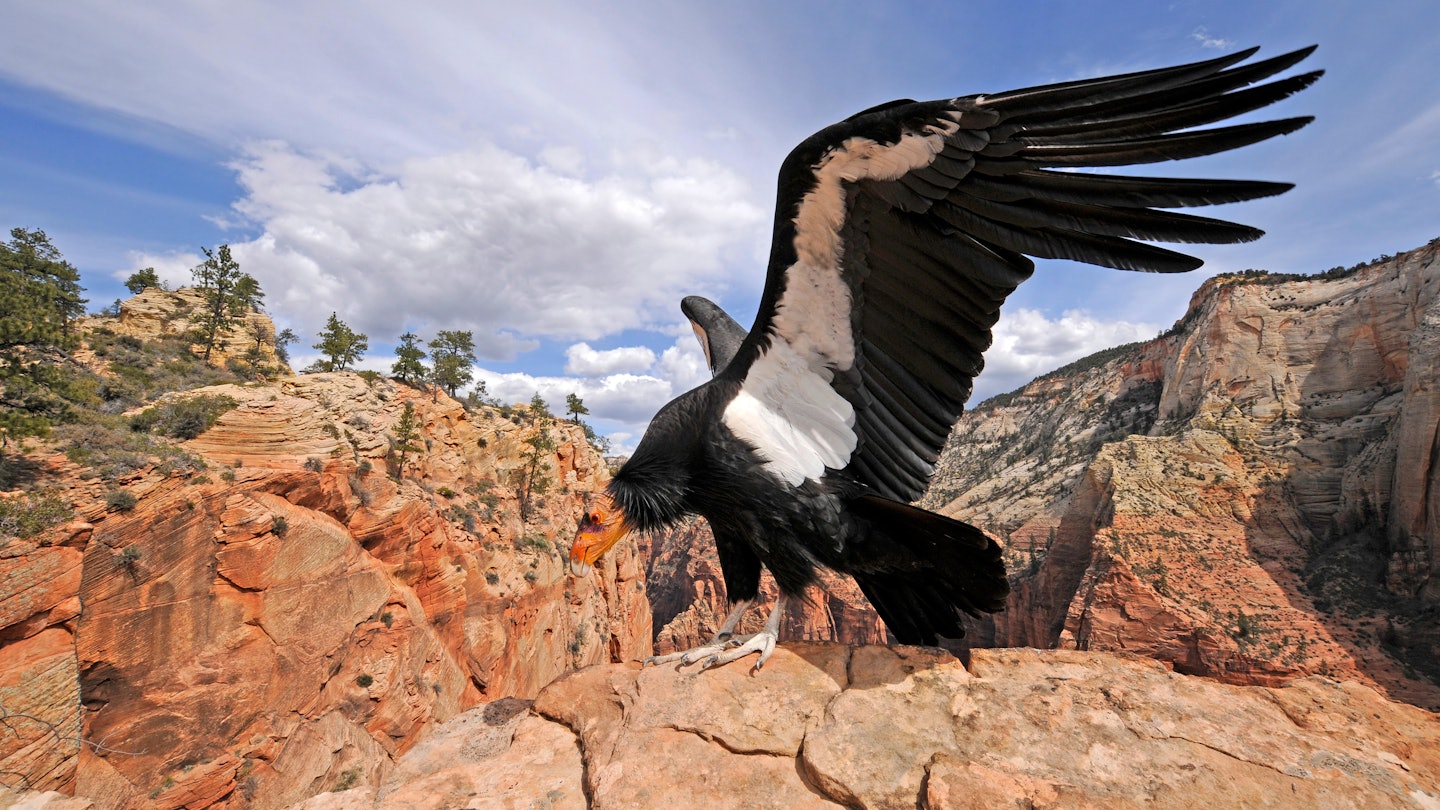Majestic California condors to be reintroduced to Redwood National Park
Mar 30, 2021 • 2 min read

There are now over 300 California condors in the wild © Panther Media GmbH/Alamy Stock Photo
Arrangements are being finalised to reintroduce the endangered California condor at Redwood National Park and at Yurok Ancestral Territory in California.
With a wingspan of almost 10 feet, the California condor is the largest soaring land bird in North America. It plays a significant role in the spiritual and cultural beliefs of the Yurok Tribe, which has led this reintroduction effort because the condor - which it calls prey-go-neesh - is part of its sacred cultural landscape. The condor release facility will be operated by the Northern California Condor Restoration Program, a partnership between the tribe and the national park. This will be the first time in 100 years that the massive vulture will return to the Pacific Northwest.

California condors prehistorically ranged from California to Florida and, in contemporary times, from Western Canada to Northern Mexico. By the mid-20th century, condor populations drastically declined due to poaching and poisoning, and in 1967, they were listed as endangered. Only 23 condors survived worldwide in 1982, and by 1987, all remaining wild condors were placed into a captive breeding program to facilitate an intensive recovery program. As a result, there are now over 300 California condors in the wild in California, Arizona, Utah and Baja California, although the bird is still listed as endangered.
Pending completion of the condor release facility, the anticipated release of condors would be fall of 2021 or spring of 2022, and new rules have been put in place to protect them. “For the last 20 years, the Yurok Tribe has been actively engaged in the restoration of the rivers, forests and prairies in our ancestral territory," says Joseph L. James, chairman of the tribe. "The reintroduction of the condor is one component of this effort to reconstruct the diverse environmental conditions that once existed in our region. We are extremely proud of the fact that our future generations will not know a world without prey-go-neesh."
You might also like:
Introducing California's national parks
California’s oldest state park is closed for 12 months following devastating wildfires
This US wildlife care center has returned dozens of birds to their natural habitats






